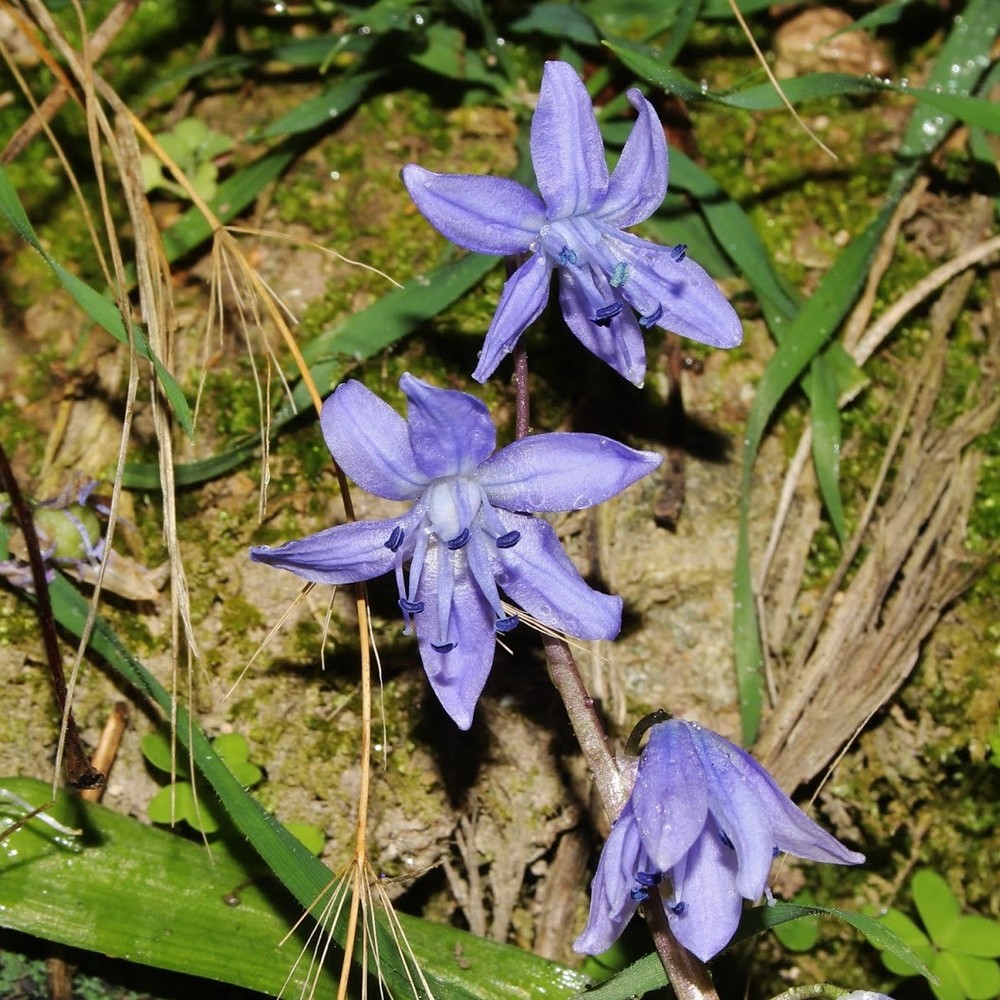Morris squill or pallid squill
(Scilla morrisii)

Description
Scilla morrisii (the Morris squill or pallid squill) is a critically endangered species of plant in the family Hyacinthaceae. It is endemic to Mediterranean-type shrubby vegetation on the island of Cyprus. The Morris squill is a perennial herb with 3-6 thick, straight leaves measuring up to 70 cm long and 1–3 cm wide. The flowers are star-shaped, small and usually coloured purple, blue or white. The flowering period is between March and April. As a perennial, it overwinters as a bulb which stores nutrients. Like all species in this genus it is somewhat toxic. The species is endemic to the north-western part of Cyprus and known from only three locations (two near the village of Panagia and one is near the Aghios Neophytos monastery). It appears to prefer an altitude of 250–900 m, where it grows in moist crevices, frequently under old oaks and terebinths. The Morris squill is classified as Critically Endangered by the IUCN due to its very restricted distribution and the low number of individuals (an estimated 600 plants in 2006). All known plants are confined to an area of less than 2 km2. The species is heavily dependent on old stands of oak trees, which are rapidly being reduced by logging, road construction and farmland conversion. Scilla is a genus of about 50 to 80 species of bulb-forming perennial herbaceous plants in the family Asparagaceae, subfamily Scilloideae. Sometimes called the squills in English, they are native to woodlands, subalpine meadows, and seashores throughout Europe, Africa and the Middle East. A few species are also naturalized in Australia, New Zealand and North America. Their flowers are usually blue, but white, pink, and purple types are known; most flower in early spring, but a few are autumn-flowering. Several Scilla species are valued as ornamental garden plants. Scilla has most recently been classified as belonging to the family Asparagaceae, subfamily Scilloideae; that subfamily was formerly treated as a separate family, Hyacinthaceae. Prior to that it was placed in the tribe Hyacintheae of the family Liliaceae. The precise number of Scilla species in the genus depends on which proposals to split the genus are accepted. Other proposals separate particularly the Eurasian species into a number of smaller genera such as Othocallis Salisb., e.g. Scilla siberica would become Othocallis siberica.
Taxonomic tree:







